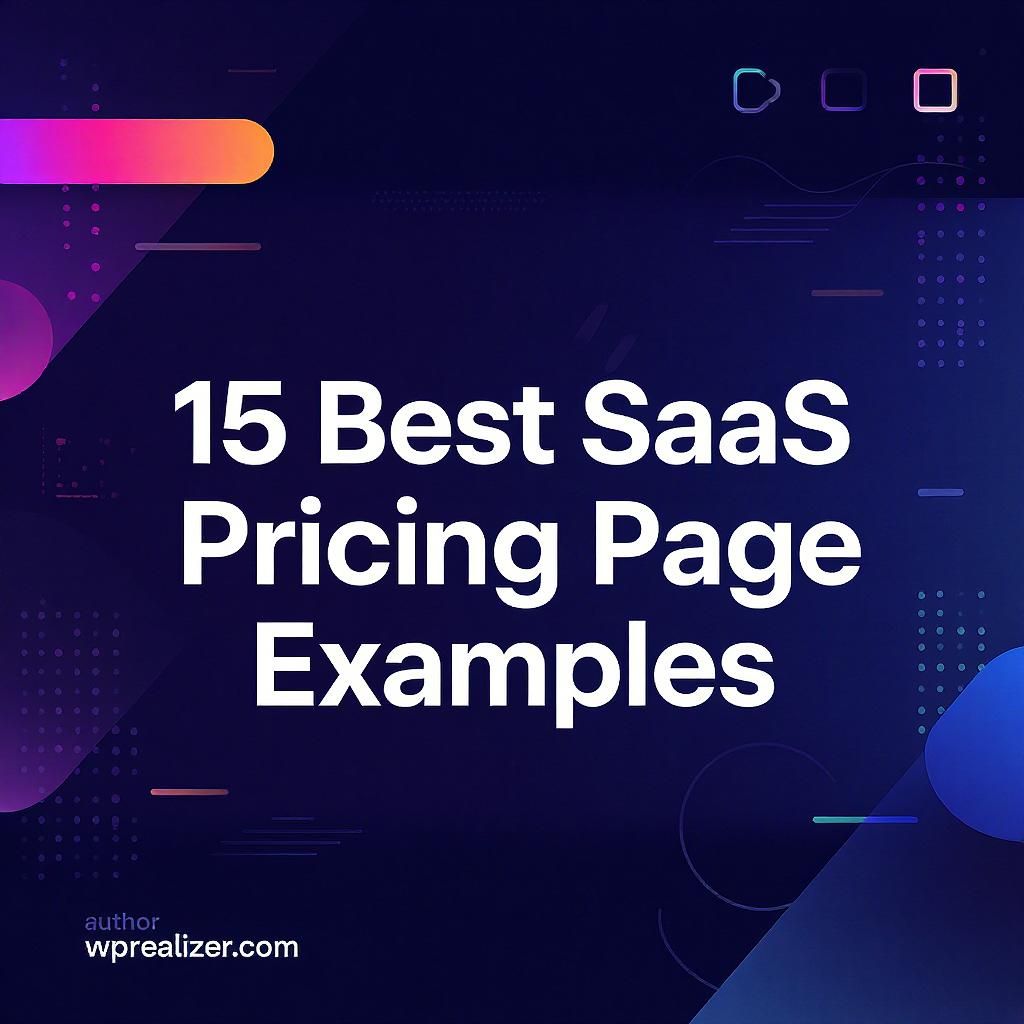
A well-crafted SaaS pricing page can be the difference between a conversion and a bounce. The best SaaS pricing pages are clear, persuasive, and user-friendly, helping potential customers quickly find the right plan.
In this post, we’ll break down 15 of the best SaaS pricing pages, analyze what makes them effective, and provide actionable insights you can apply to your own pricing strategy.
What Makes Best SaaS Pricing Page?
Before diving into examples, let’s outline the key elements of an effective pricing page:
✅ Simple, scannable layout – Avoid overwhelming users with too many options.
✅ Clear value differentiation – Show what each plan offers at a glance.
✅ Transparent pricing – No hidden fees or confusing calculations.
✅ Strong CTAs – “Start free trial” or “Get started” buttons on every tier.
✅ Social proof – Testimonials, trust badges, or customer logos.
✅ Annual vs. monthly pricing – Show discounts for long-term commitments.
✅ FAQ or help section – Address common objections upfront.
Now, let’s look at 15 companies that nail SaaS pricing pages.
1. Slack – Interactive & Personalized
Why it works:
- Dynamic pricing calculator adjusts based on team size.
- Free plan is prominently displayed, lowering entry barriers.
- Clear feature breakdown with checkmarks for easy comparison.
Takeaway: Let users see pricing changes in real time based on their needs.
2. Notion – Minimalist & Straightforward
Why it works:
- Three simple tiers (Free, Plus, Business).
- Side-by-side feature comparison with minimal clutter.
- Annual discount highlighted (save 20-30%).
Takeaway: Keep it clean—avoid overwhelming users with too many options.
3. Zoom – Usage-Based Pricing
Why it works:
- Sliders for usage estimates (meeting duration, participants).
- “Most Popular” badge on the Pro plan.
- Free plan included to encourage adoption.
Takeaway: If your pricing depends on usage, let users adjust inputs to see costs.
4. HubSpot – Modular Pricing
Why it works:
- “Build your own plan” approach (CRM + Marketing + Sales).
- Free forever plan as an entry point.
- Transparent add-on costs (e.g., extra contacts).
Takeaway: Offer flexibility—let users customize their plan.
5. Canva – Visual & Engaging
Why it works:
- Before/after examples showing feature unlocks.
- Student & nonprofit discounts clearly displayed.
- “Most Popular” highlighted with a subtle border.
Takeaway: Use visuals to demonstrate value, not just text.
6. Shopify – ROI-Focused
Why it works:
- Revenue calculator showing fees at different sales volumes.
- “Best for” labels (starter, scaling, enterprise).
- Free trial with no credit card required.
Takeaway: Show how pricing scales with business growth.
7. Ahrefs – Feature-Rich Comparison
Why it works:
- Detailed feature matrix (✓/✗ per plan).
- “What’s included” expandable sections.
- Transparent data limits (e.g., keyword reports per month).
Takeaway: If you have complex features, make comparisons easy.
8. Freshdesk – Pain Point-Focused
🔗 freshworks.com/freshdesk/pricing
Why it works:
- “Which plan is right for you?” quiz.
- Workflow visuals tied to pricing tiers.
- Chatbot for instant pricing questions.
Takeaway: Help users self-select the right plan.
9. Webflow – Interactive Demos
Why it works:
- Live product demo for each plan.
- “What others pay” average price indicator.
- Traffic-based pricing for clarity.
Takeaway: Let users experience features before committing.
10. Zapier – Task-Based Pricing
Why it works:
- Pricing based on “Zaps” (automations).
- Volume discounts auto-applied.
- Free plan available for testing.
Takeaway: If pricing is usage-based, make it easy to understand.
11. Figma – Seat-Based Pricing
Why it works:
- Clear distinction between editors & viewers.
- Nonprofit/education discounts in a popup.
- “Downgrade anytime” reassurance.
Takeaway: If pricing is per seat, make it flexible.
12. Mailchimp – Email vs. SMS Pricing
Why it works:
- Separate pricing for email & SMS.
- Audience size calculator.
- Compliance features highlighted.
Takeaway: If you offer multiple products, segment pricing clearly.
13. Calendly – Persona-Based Pricing
Why it works:
- “Who are you?” selector (individual vs. team).
- 24/7 support only on higher tiers.
- Integration limits per plan.
Takeaway: Tailor pricing to different user types.
14. Loom – Simple Two-Tier Model
Why it works:
- Clean two-column layout (Business vs. Enterprise).
- “Compare all features” link for details.
- No credit card required for trial.
Takeaway: Sometimes, fewer options convert better.
15. Tettra – AI-Powered Pricing
Why it works:
- Pricing based on knowledge base size.
- AI features with time-saving estimates.
- Transparent API rate limits.
Takeaway: If AI is a selling point, quantify its value.
Crucial Pointers for Your SaaS Pricing Homepage
- Keep things simple: Don’t give users too many choices.
- Present value in a graphic way. Put sliders, checkmarks, or before-and-after pictures to use.
- Provide a trial or free tier to lower barriers for new users.
- Make the most of the best offer by using “Most Popular” badges.
- Side-by-side feature grids are the most effective for simplifying comparisons.
Does Your Pricing Page Need to Be Optimized?
If your SaaS pricing plan is being redesigned, take into account:
- Testing various layouts A/B
- Incorporating interactive calculators
- Plan names that are simpler (such as “Starter, Pro, Enterprise”)
Which SaaS price page do you prefer? Share your thoughts in the comments!
